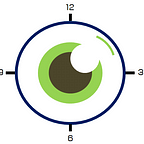Why Oscar-nominated film The Martian is a study in Superforecasting
Forecasting as a pursuit may have no wider global application than the annual ritual of predicting Academy Award winners. Hollywood studios with skin in the game dispense with foresight in favor of aggressively courting voting Academy members to anoint their films with statuettes (and the lucrative box-office they bring); but outside of Tinseltown, average movie-goers everywhere become armchair handicappers as soon as nominees are announced every January. Oscar pools are forecasting tournaments in miniature — opportunities to test one’s predictive accuracy in a good-natured competitive environment.
Viewed through a Superforecaster’s lens however, this year’s Oscar race stands out, thanks to one of the contenders. Nominated in seven categories, Ridley Scott’s sci-fi drama The Martian has won kudos for not only Matt Damon’s performance as a botanist who singlehandedly colonizes the Red Planet, but also its scientific plausibility. While physicists will quibble over such details as whether a rocket escaping Mars’ gravity can maintain integrity with little more than a tarp for a nose-cone, Superforecasters can unequivocally endorse the film’s core lesson as one of their own: even the biggest conundrums can be resolved by breaking them down into smaller, workable challenges.
In The Martian, Damon’s character Mark Watney and his colleagues refer to this methodology as “working the problem,” while Superforecasters prefer the term “Fermi-izing” — a reference to the Italian-American physicist and Nobel laureate Enrico Fermi, who built the first nuclear reactor. As Phil Tetlock details in Superforecasting: The Art and Science of Prediction, Fermi tackled seeming enigmas by posing brain teasers that pushed his team to crack uncertainty and information scarcity through progressive enquiry.
Stranded on Mars and faced with an array of obstacles ranging from (spoiler alert!) lack of contact with Mission Control; a minimum of years before a rescue; insufficient food and water resources; and, of course, being alone on an inhospitable planet, Watney rejects their insurmountability. Instead, he incrementally applies what he knows to each problem until he reaches effective resolutions on all.
Superforecasters forecast future outcomes in exactly the same way. Ignoring pundits and “experts” who still insist on the outmoded axiom that the future cannot be predicted, the best forecasters embrace the most uncertain of questions and solve for x by assessing as many variables as possible, assigning probabilities and weights to each in order to get as close as possible to the answer as quickly as possible. Over the four year time span in which Superforecasters were tested for their accuracy, as questions became more difficult and wide-ranging, Supers managed to hone their precision.
Towards the end of The Martian, an earthbound Watney instructs a new class of astronauts in the rudiments of working the problem — an affirmation of how teachable such fundamental life skills can be. And so it is with predicting future outcomes: we know that statistically significant improvements in forecasting accuracy can be achieved when people receive training in Superforecaster techniques like Fermi-izing.
As to whether you can pwn your fellow office Oscars pool forecasters like a Superforecaster in time for this year’s awards broadcast remains to be seen. But you can certainly gain some practical experience Fermi-izing by working the host of problems available on the Good Judgment Open tournament. It’s a free way to test your mettle — no rockets necessary.
